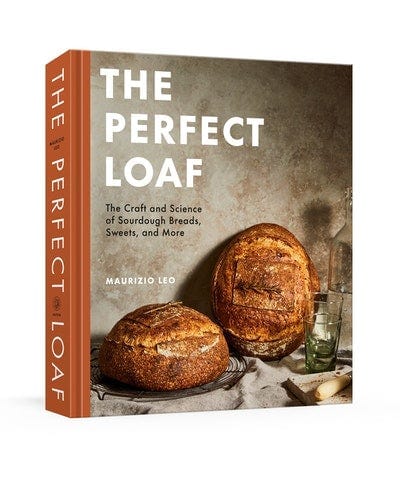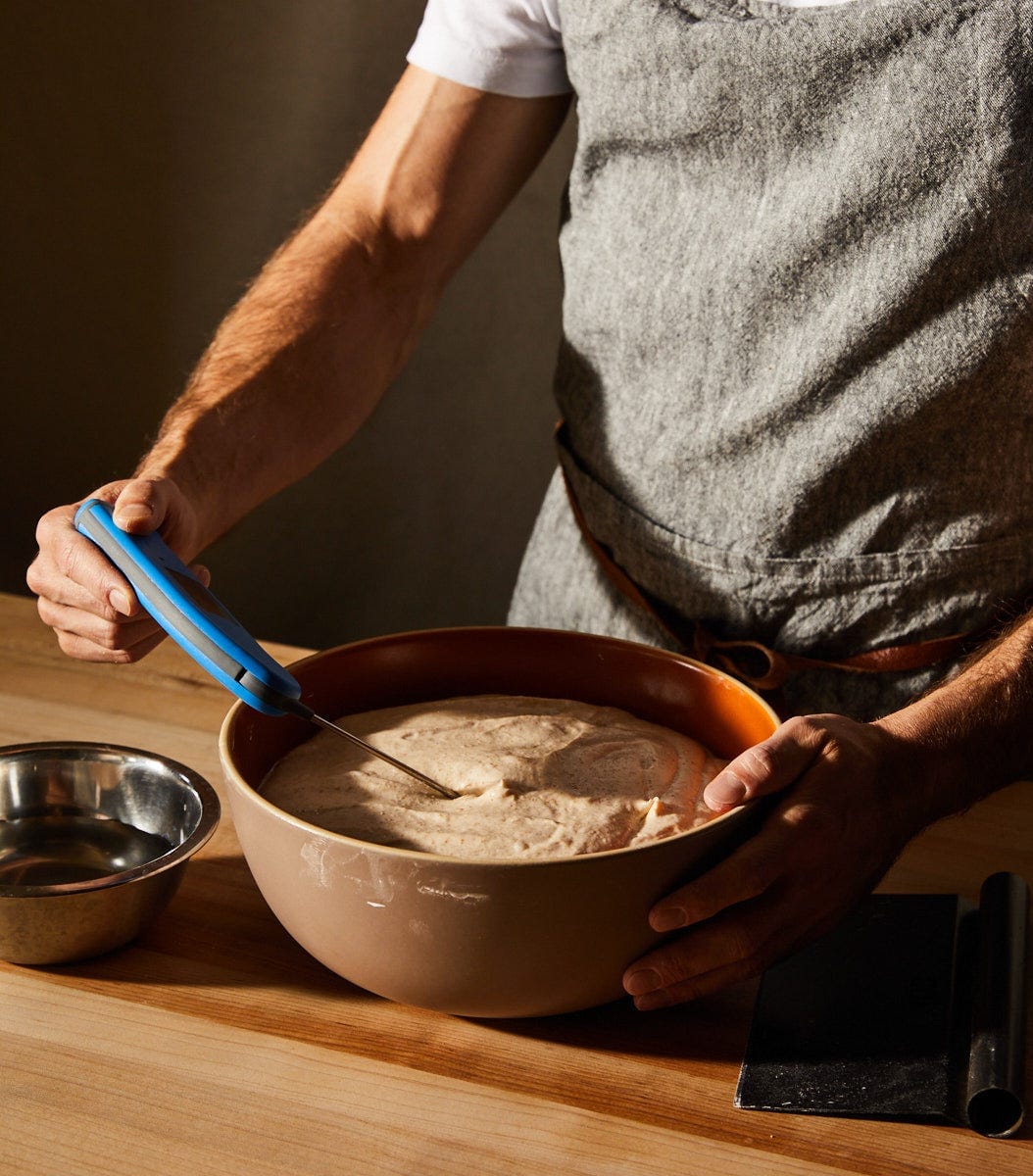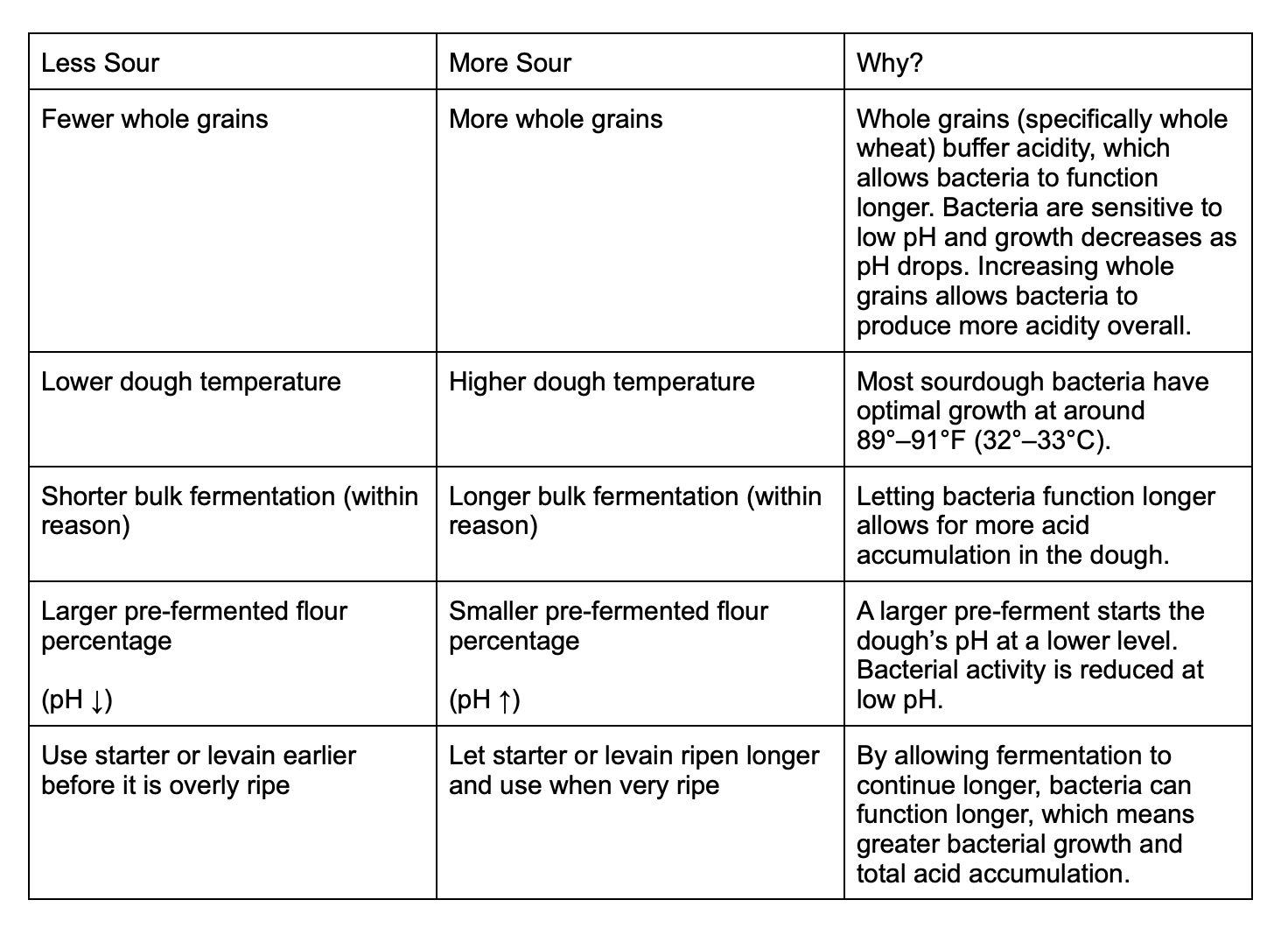Tinkering with Sourness
An excerpt from Maurizio Leo's 'The Perfect Loaf'

Table of Contents
Today I’m very happy to share an excerpt and a recipe from Maurizio Leo’s new(ish) book The Perfect Loaf. Most people here should already know Maurizio and his work, but if not, he is the the creator of the website The Perfect Loaf, one the most important online resources for sourdough baking. His book of the same name came out last year and (not surprisingly) won best book in the bread category at this year’s James Beard awards.

I asked Maurizio if I could share some of the book with you all here, and we decided to focus on his guidelines on tweaking sourness in breads (up or down), along with a recipe using them, one that pushes the acidity to the max using a variety of strategies. I’m generally a mild sour sort of guy, but I’ve been thinking a lot about how to manipulate sourness lately, and this is an excellent guide to doing so. It’s also a great introduction to the idea that no method exists in isolation to any other; if you want to push a formula in a particular direction, you need to piggyback individual strategies to achieve the desired effect.
If you don’t yet have The Perfect Loaf, I hope these posts inspire you to!
—Andrew

Tinkering With Sourness
At its heart, sourdough breadmaking revolves around tinkering with microbes. The goal is to balance the yeast and bacterial activity in your starter, levain, and final dough to produce bread with ample flavor, nutrition, and pleasing eating qualities. Some bakers want a strong sour taste, whether it’s to pair the bread with other foods or simply to make the mouth water. Others desire a subtler sourness to help elevate the flavor inherent in the grain, to boost sweetness, or just for a mild flavor profile overall. There are many parts of a bread formula you can play with to shift this balance: dough temperature, total fermentation time, flour choice, inoculation percentages, and more.
As you know with breadmaking, each part of the process has an impact on every other thing. With so many interrelated components, it’s very hard to isolate and change a single element and be able to correlate that with an outcome—and this holds true for changing the flavor profile. For instance, it’s hard to make a blanket statement that a dough with a high final dough temperature will result in a sourer loaf than one with a cooler temperature. Why? Because many other inputs must be considered as well (e.g., flour choice, pre-fermented flour percentage, final dough temperature of the pre-ferment, and so on). However, we can step back and look at this from a broader perspective: Think about what changing a single component might do to the overall dough system, then piece together a path forward for a recipe that’ll get us to the flavor profile that we’re after. For example, if we want to add a little more sourness to our bread, we could look at increasing the whole-grain percentage in the levain and final dough and see how that affects the outcome. If the result doesn’t achieve our goal, then we can look at taking the same dough and increasing the total fermentation time with a cold bulk fermentation and cold proof, and taste the results. If the flavor is too sour, we could then adjust it by dropping the cold bulk fermentation but keeping the cold proof.
The challenge (and dare I say, fun!) for sourdough bakers is to weave together a plan for altering these components to create the tapestry of the final loaf they’re after. So let’s look at a few of the levers I like to pull when adjusting the sourness in a loaf of sourdough bread. Keep in mind the following holds true in doughs that are lean, i.e., without the presence of sugar, egg, or butter.

Check out my recipe for Extra-Sour Sourdough, where we can apply these modifications to a dough to increase sourness while still producing a loaf that’s texturally pleasing and delicious.

Reprinted from The Perfect Loaf, Copyright © 2022 by Maurizio Leo. Photographs copyright © 2022 by Aubrie Pick and Maurizio Leo. Published by Clarkson Potter, an imprint of Random House.
wordloaf Newsletter
Join the newsletter to receive the latest updates in your inbox.




